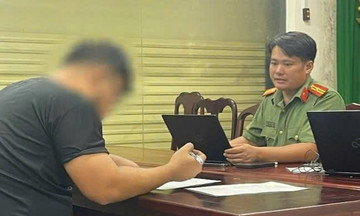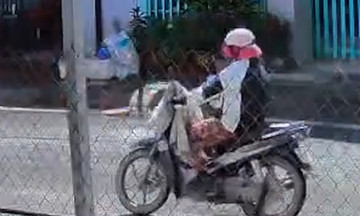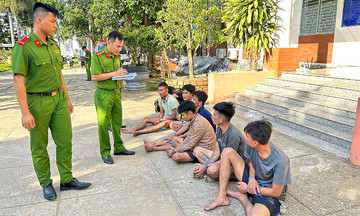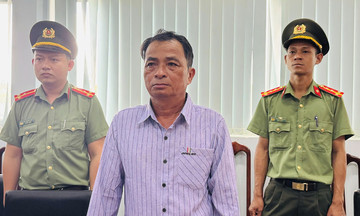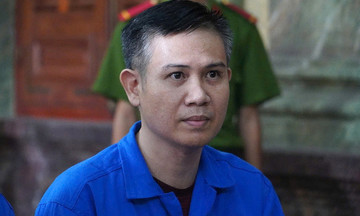This content is outlined in the draft circular detailing several articles of the People's Air Defense Law, currently open for public comment from 5/9 to 15/9.
According to the People's Air Defense Law, effective from 1/7, all types of unmanned aerial vehicles and flying devices must be registered before operation. To guide the implementation of certain articles under the Ministry of Public Security's management, the draft circular outlines the registration procedures for these devices.
Based on the device's takeoff weight, the Ministry of Public Security proposes that devices under 2 kg be registered at the commune-level police; those weighing between 2 and 25 kg at the Cybersecurity and High-Tech Crime Prevention Department of the provincial police. Devices exceeding 25 kg will be registered at Department A05 (Cybersecurity and High-Tech Crime Prevention) under the Ministry of Public Security.
Citizens can choose a convenient registration location, regardless of their residence or permanent address.
Permits issued within 3 days:
Owners are expected to submit a registration form, personal identification documents, aircraft documents, and proof of financial obligations.
Personal documents include Citizen Identity Cards or passports (for individuals) or tax codes and establishment decisions (for organizations).
Aircraft documents include a manufacturer's certificate of origin (for domestically produced devices) or a declaration of origin (for imported devices). These documents should specify the brand, manufacturer's name, color, maximum takeoff weight, purpose of use, serial number, year of manufacture, and accompanying equipment (if any).
The registration process will be carried out entirely or partially online through the public service portal. Certificates will be issued within 3 days of receiving complete and valid documents and successful fee payment. If a registration certificate is not issued, the receiving unit must respond and provide a reason.
The initial certificate's validity is based on the manufacturer's warranty and can be extended if technical standards and regulations are met, as confirmed by competent agencies.
Owners can also apply for a certificate renewal if their personal information changes (name, personal identification number, or other legally required information), if the certificate is damaged, or if the owner requests it.
In cases of transfer, exchange, donation, or inheritance, the certificate must be revoked before the new owner can register for a new one.
Drone operators must attend a course for at least 3 months:
Vehicle registration is only the first requirement for operating an aircraft. The draft decree reviewed by the government in March imposed further conditions on users.
Specifically, the operator must be at least 18 years old, unless the device's maximum takeoff weight is less than 0.25 kg. Additionally, the operator must not have alcohol, drugs, sleeping pills, or other legally prohibited substances in their blood or breath.
For devices over 0.25 kg, users must undergo aviation training and acquire flight control skills through a course lasting at least 3 months. The training will combine in-person and online formats, according to the draft.
Applicants must submit an application form, copies of personal identification documents, a health certificate, a curriculum vitae, and a criminal record certificate. The course fee has not yet been specified.
The government proposes that after training, students will take theoretical and practical exams and be granted a flight permit if they meet the requirements.
Two types of permits are proposed: a Visual Flight Rules (VFR) permit (class A) and an Instrument Flight Rules (IFR) permit (class B), both valid for 10 years.
Class A permit holders can only operate aircraft weighing between 0.25 and 2 kg.
For aircraft weighing 2 kg or more, or for flights beyond visual line of sight or pre-programmed flights via a central controller, a class B permit is required.
The Ministry of Public Security emphasizes the growing trend of using aircraft in daily life, security, and national defense, especially in conflict zones, demonstrating their effectiveness and low cost in combat.
In security and national defense, aircraft are used for surveillance in large or difficult terrains like power transmission lines, forests, coastlines, and borders, relaying information to authorities for timely intervention.
Aircraft also assist police in search and rescue, firefighting, traffic patrol, reconnaissance, criminal pursuit, and crowd control.
These devices have numerous applications in daily life, including agricultural monitoring, entertainment, filmmaking, and recreation.
Given this trend, the Ministry recognizes potential threats to national security, such as intelligence gathering, obtaining state secrets, criminal activities, inciting protests, terrorist attacks, and privacy violations.
The Ministry believes that issuing this circular detailing the People's Air Defense Law is necessary to improve legal frameworks, ensure effective aircraft management, promote economic development, and maintain social order.
Hai Thu



